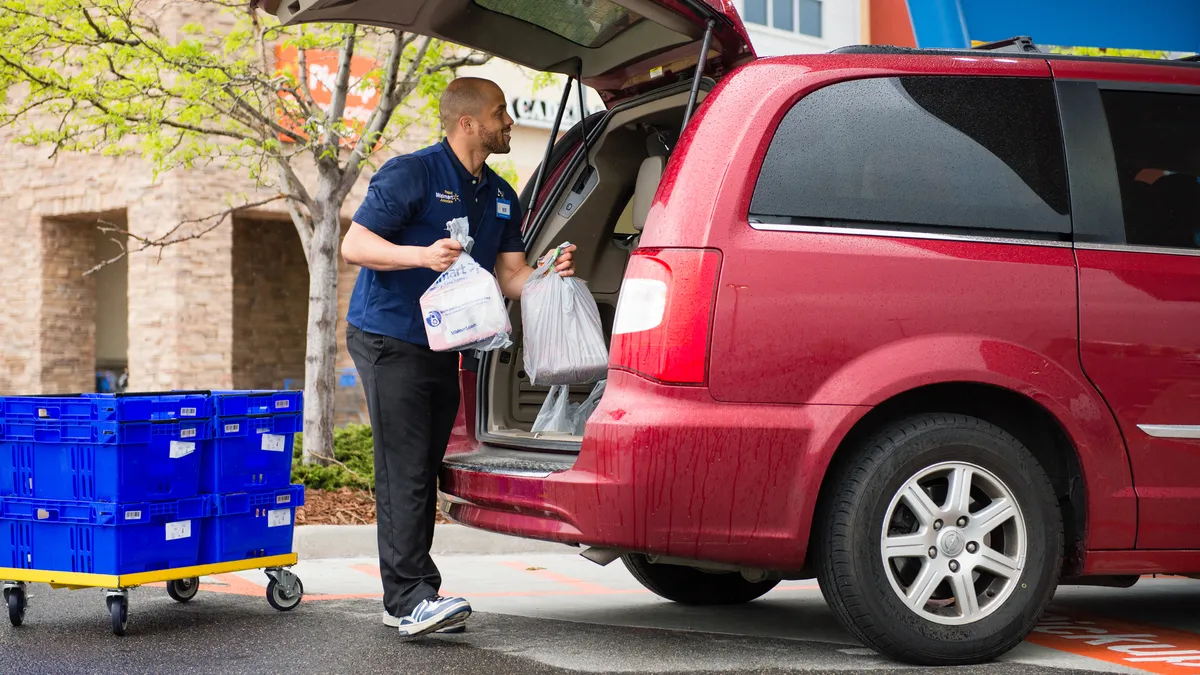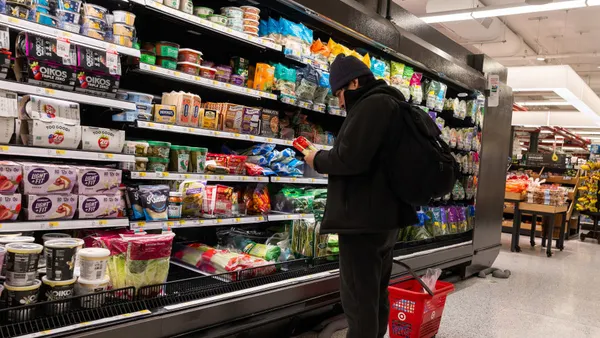Dive Brief:
- Online grocery sales in the U.S. have tripled since 2018 and are expected to quadruple in the next five years, according to a report by Packaged Facts. The spike is due to the increase in online grocery shopping options and consumers becoming more open to trying the services, the firm noted.
- Amazon and Walmart continue to be leaders in the market, accounting for 28% of all online sales. Instacart, Kroger, FreshDirect, and Peapod represent all of the other major grocery chains, with Instacart ranking as the largest third-party delivery service. Most of the major growth in online sales have occurred since 2016 as grocers increased participation and expanded their e-commerce platforms.
- "Three key factors have created a perfect environment for growth of the online grocery market in the U.S. over the last five years," says David Sprinkle, research director for Packaged Facts. "There's been increased use of mobile phones and smartphones, interfaces for websites and mobile apps have improved, and there's been a notable expansion of crowd-sourced business models to shopping and delivery."
Dive Insight:
Ever since Amazon's acquisition of Whole Foods, grocers have hurriedly added online shopping capabilities. In order to lure in consumers and build loyalty into the future, though, large retailers with the investment capital to do so have started thinking outside of the e-commerce box.
Albertsons just launched its Digital Marketplace, while Kroger this summer kicked off Ship. Meanwhile, Walmart is tinkering with automation and continuing to roll out free online order pickup, while Whole Foods offers free pickup and two-hour delivery to Prime members in select markets. Ahold Delhaize and its retail banners have been integrating e-grocer Peapod into their store fulfillment operations, and have begun to heavily promote the service.
To further boost sales, Packaged Facts notes that retailers must target their offerings. Millennials and young parents are obvious demographics to pursue. But the report notes that older consumers and those with mobility issues are also prime candidates, despite their assumed lack of technical fluency.
"Although many of these consumers may not be comfortable with online ordering yet, they can be targeted for home delivery options where groceries can be brought directly into their home," Packaged Facts notes in its report.
The firm notes that more and more consumers are using mobile apps to order groceries. This comes as brands like Food Lion continue to update their store apps, and it should continue as shoppers become accustomed to the ease of using the platform. Packaged Facts also notes that center store items are the most commonly purchased, while concerns over freshness lead to hesitancy to purchase many perishable goods. These concerns differ according to grocer, however — FreshDirect, for one, sees the majority of its sales in fresh produce, meat and other perishables — and should come down as retailers improve their quality control operations.
It’s not just e-grocers that are contributing to the growing online sales. Grocery delivery services like Instacart have changed the game, with most major grocery chains partnering with the service. More on-demand services have also begun tapping into the grocery market. This includes Postmates, GrubHub, and DoorDash. Uber recently hinted it would make another run at the market soon.
Despite the growing online grocery market, reports note that only a select group of retailers — namely, the big players like Walmart and Amazon — will profit off the service. Deutsche Bank analyst Paul Trussell noted a continuing bifurcation of the market, with investment and innovation driving sales while grocers with me-too offerings give up market share.















